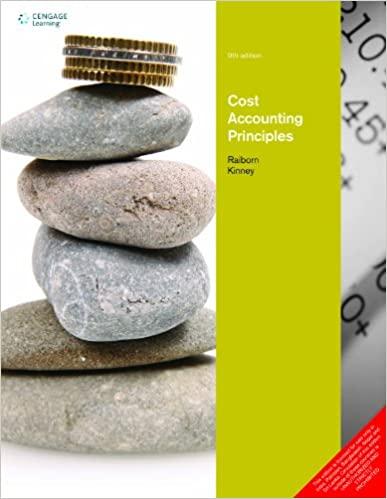Answered step by step
Verified Expert Solution
Question
1 Approved Answer
Budget Analysis: A budget is an expression of management's expectations and goals concerning future revenues and costs. To increase their effectiveness, many budgets are flexible,
Budget Analysis: A budget is an expression of management's expectations and goals concerning future revenues and costs. To increase their effectiveness, many budgets are flexible, including allowances for the effect of variation in uncontrolled variables. For example, the costs and revenues of many production plants are greatly affected by the number of units produced by the plant during the budget period, and this may be beyond a plant manager's control. Standard costaccounting procedures can be used to adjust the directcost parts of the budget for the level of production, but it is often more difficult to handle overhead. In many cases, statistical methods are used to predict or forecast overhead from the level of production using historical data.
As a simple example, consider the historical data for a certain plant. Enter the data into EXCEL and analyze it to answer the following items.
Production in units:
Overhead costs in $:
Provide the samplebased estimates for the model parameters. Round your answers to three decimal places.
x
Use the model to predict the overhead cost associated with the production of units. Round your answer to two decimal places.
$
The actual overhead cost was $ when units were produced See the raw data above Calculate the residual. Round your answer to two decimal places.
$
Interpret the residual you calculated immediately above by mentally inserting the ABSOLUTE VALUE of the residual into the blanks below.
SELECT ONE:
When using this model to make predictions, we expect to be off by units, on average.
Our prediction was units lower than the actual overhead cost when units were produced. Our prediction was an underestimate.
Our prediction was units higher than the actual overhead cost when units were produced. Our prediction was an underestimate.
When using this model to make predictions, we expect to be units closer to the true value, on average.
Our prediction was units higher than the actual overhead cost when units were produced. Our prediction was an overestimate.
Our prediction was units lower than the actual overhead cost when units were produced. Our prediction was an overestimate.
e Use the model to predict the overhead cost associated with the production of units. Round your answer to five decimal places.
thousands of dollars
The actual overhead cost was $ when units were produced See the raw data above Calculate the residual. Round your answer to five decimal places.
thousands of dollars
Interpret the residual you calculated immediately above by mentally inserting the ABSOLUTE VALUE of the residual into the blanks below.
SELECT ONE
Our prediction was units higher than the actual overhead cost when units were produced. Our prediction was an overestimate.
When using this model to make predictions, we expect to be units closer to the true value, on average.
When using this model to make predictions, we expect to be off by units, on average.
Our prediction was units higher than the actual overhead cost when units were produced. Our prediction was an underestimate.
Our prediction was units lower than the actual overhead cost when units were produced. Our prediction was an underestimate.
Our prediction was units lower than the actual overhead cost when units were produced. Our prediction was an overestimate.
Step by Step Solution
There are 3 Steps involved in it
Step: 1

Get Instant Access to Expert-Tailored Solutions
See step-by-step solutions with expert insights and AI powered tools for academic success
Step: 2

Step: 3

Ace Your Homework with AI
Get the answers you need in no time with our AI-driven, step-by-step assistance
Get Started


